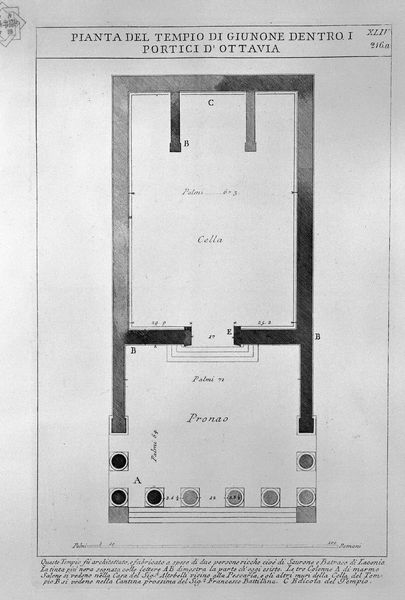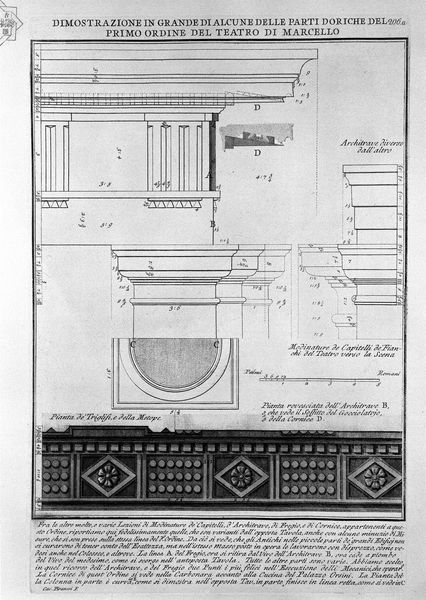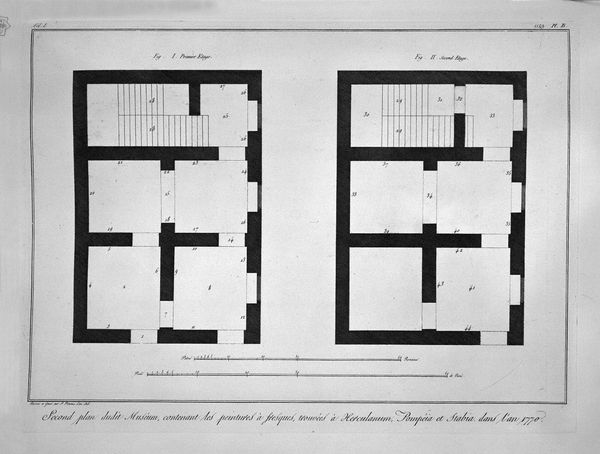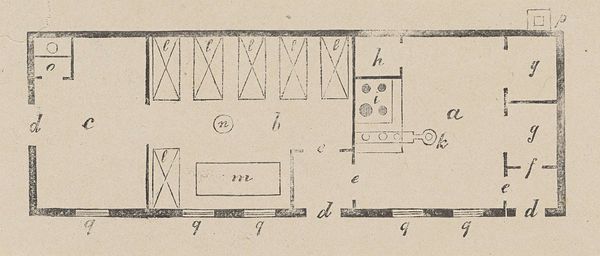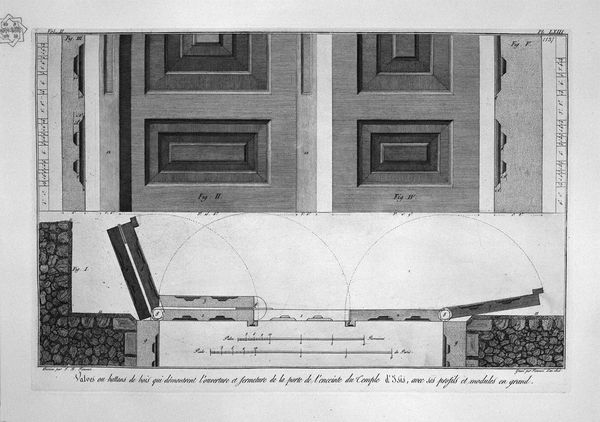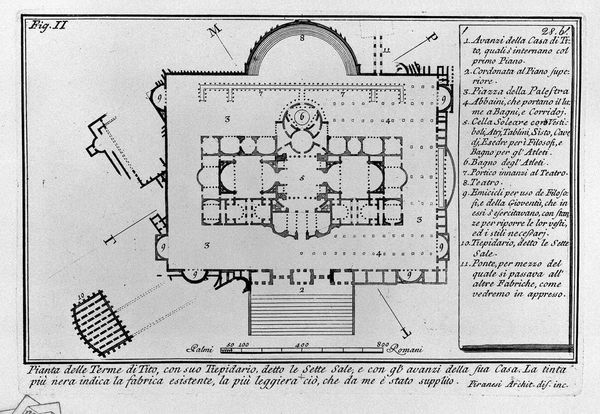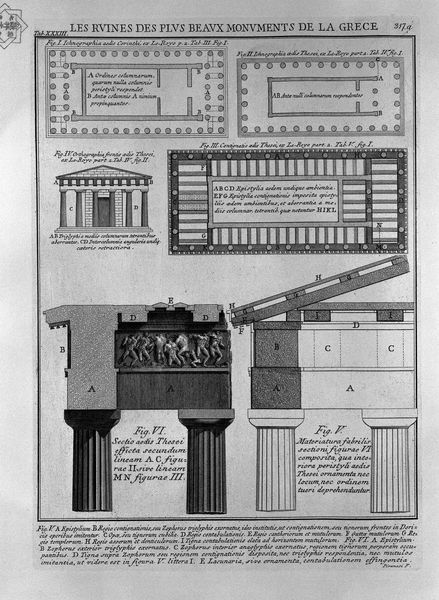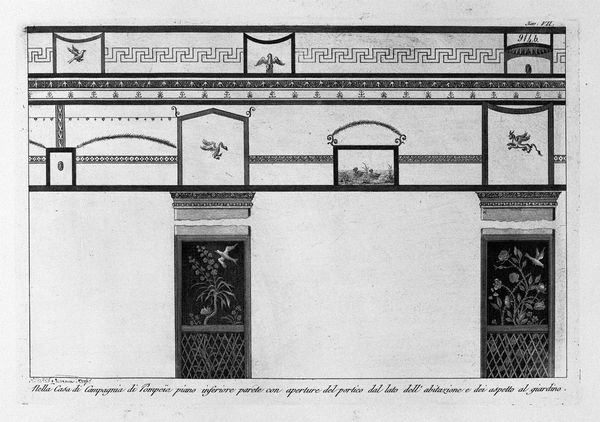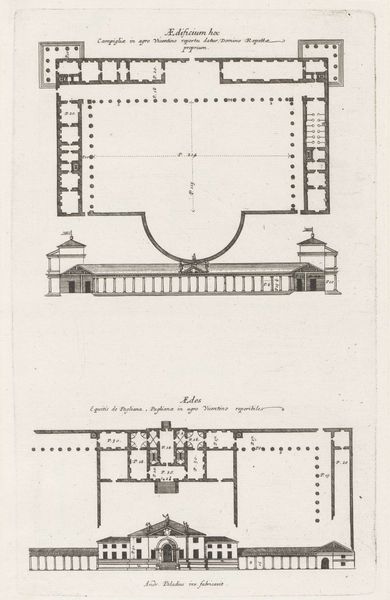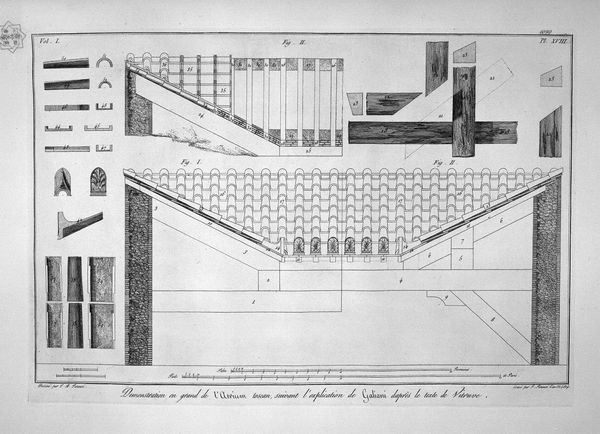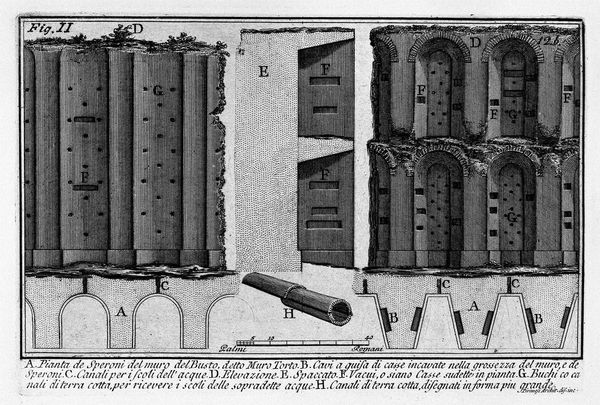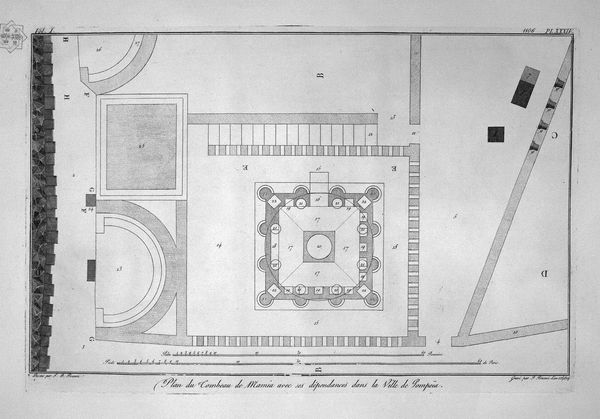
Facade of the Temple Tuscany (by Vitruvius, according to Le Roy and Perrault)
0:00
0:00
drawing, print, engraving, architecture
#
drawing
#
neoclacissism
# print
#
classical-realism
#
form
#
geometric
#
line
#
engraving
#
architecture
Copyright: Public domain
Giovanni Battista Piranesi made this etching, “Facade of the Temple Tuscany,” based on interpretations of Vitruvius by Le Roy and Perrault. Made in 18th-century Italy, this image speaks to the period’s fascination with classical antiquity, but also to the way architectural knowledge was constructed and disseminated. Piranesi, known for his detailed and dramatic views of Roman ruins, here presents a more academic, almost archaeological view. The etching shows architectural elements and a floor plan, meticulously labeled. This isn't just art, it's a form of architectural scholarship, reflecting the Enlightenment's drive to classify and understand the world through reason and empirical observation. The image also reflects the social status of architecture as an academic discipline, taught in institutions like the French Academy in Rome. To fully appreciate this work, we might consult not just art historical texts, but also architectural treatises, archaeological reports, and even social histories of the period. Understanding the institutions and intellectual currents of Piranesi's time allows us to see this etching as more than just a depiction of an ancient temple, but as a product of a specific cultural and intellectual moment.
Comments
No comments
Be the first to comment and join the conversation on the ultimate creative platform.

